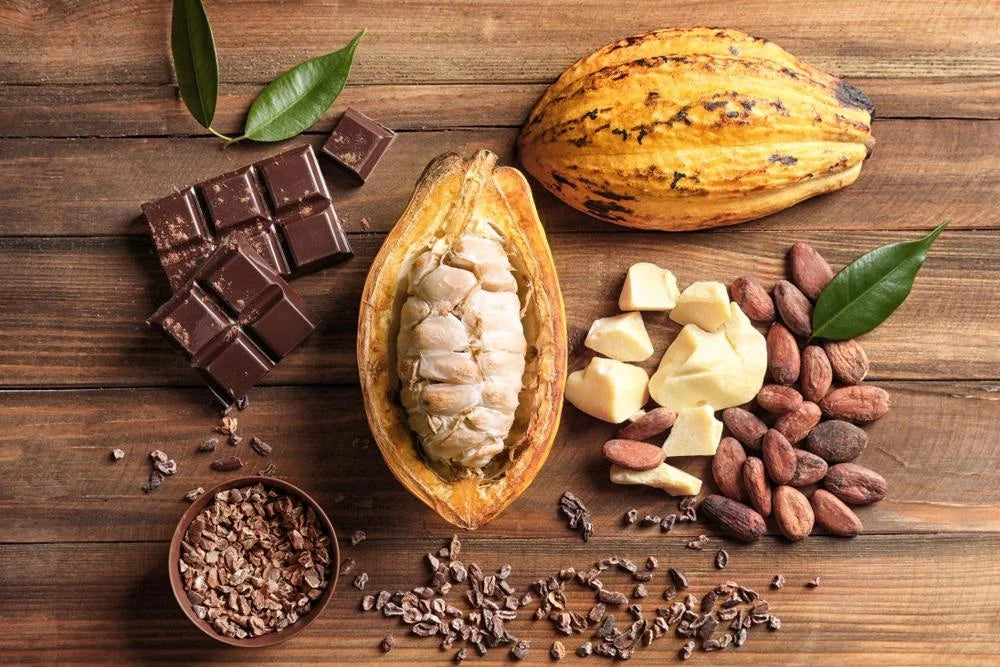
Low cost pest control of Cocoa
Share
Introduction
Pest control in cocoa cultivation is a critical aspect of ensuring sustainable production and high-quality yield. Cocoa, a primary ingredient in chocolate, is vulnerable to a variety of pests, including insects, fungi, and rodents, which can significantly impact crop health and productivity. Effective pest management strategies are essential to mitigate these threats and involve a combination of traditional and modern techniques, such as biological control, chemical treatments, and integrated pest management (IPM) practices. These strategies aim to minimize the damage caused by pests while promoting environmental health and economic viability for cocoa farmers. Addressing pest issues in cocoa not only secures the supply chain but also supports the livelihoods of millions of smallholder farmers in tropical regions where cocoa is predominantly grown.

The major insect pests in Cocoa
1. Tea mosquito bug: (Helopeltis spp.)
Nymphs and adults of this mirid bug suck sap from the leaves,young shoots, inflorescence and pods.
The injury made by the suctorial mouth parts of the insect cause exudation of a resinous gummy substance from the feeding punctures.
The tissues around the point of entry of stylets become necrotised and black scab formed due to the action of the phytotoxin present in the saliva of the bug.

Pest Management in Cocoa
These lesions turn pinkish brown in 24 hours and become black in 2-3 days.
Feeding on tender leaves causes crinkling. Affected shoots show long black lesions and may cause die-back in severe cases.
(https://khethari.com/products/anoka-trichoderma-viridae)

Management:
Regulation of shade and sunshine through important in managing TMB damage.
Removal of alternate hosts such as guay cashew, neem etc. from the immediate vicinity.
If infestation persists spray may be repeati at 20 to 30 daysinterval, one spray each duri flushing and flowering seasons.
Spraying shall be resorted to afternoon hours.
2. Mealy bugs: (Planococcus lilacines and P. citri)
Feeding on tender apical shoots results in reduced growth and such shoots deformed into a slender hair like processes resembling a brush.
Colonization of flower cushions results in cushion abortion and continuous attack results in withering and drying up of flower cushions.Infestation of cherelles by mealy bug induces cherelle wilt.Feeding on the rind of pods resulta in irregular cracks and pitting.Usually beans are not affected by mealy bug colonized on maturepods .
Seedlings and young plants colonized by the mealy bugs show retarded growth and excessive branching at undesired height. The population of mealy bug attains peak during April-May.

Management:
Conservation of lady bird beetles belonging to Pullas sp. as well as Lycaenid, Spalgias eplus for encouraging bio-suppression of mealy bugs.
Common management practices includes, spot application on the pest loci with 0.5% neem oil emulsion two-times at fortnightly intervals

3. Aphids: (Toxoptera aurantii)
Aphids colonize terminal and growing shoots of cocoa causing leaf deformation during summer. They can also colonize on succulent stem,flower buds and small cherelles, which may cause premature shedding of flowers and curling of leaves. Extensive damage is not reported.

Management :
Cultural practices like timely pruning of the cocoa trees will reduce the colony build up.
A number of natural enemies feed on the aphids and reduce the population. These include coccinellid beetles (Coccinella septempunctata, Scymnus coccioora, Chilocorus nigrita etc.),syrphids (Eristalis spp., Volucella spp.) and chrysophids(Chrysoperla carnea).

4. Leaf eating caterpillar: ( Lymantria ampla)
The caterpillars cause severe damage on leaves in young plants. Theearly-instar larvae feed on leaves or the surface tissues of growing podsduring day and night, but later Instar caterpillars are nocturnal in habit.Their population increases after the monsoon.

Management:
If the damage is very severe, neem oil (0.5%) spraying could be given.

5. Stem borer: (Zeuzera coffeae)
Grubs tunnel the bark initially and penetrate deeper making galleries. On younger trees the pest attack occurs at the jorquette, which normally results in the drying or breaking of the portion above

Management:
Mechanical collection and destruction of grubs from the affected branches,Place Chlorpyriphos 0.05% soaked cotton and fasten withpolythene strips. Swab Coal tar+ Kerosene 1:2 (basal portion of the trunk-3 feet height) after scraping the loose bark to prevent oviposition by adults.
Conclusion
Effective pest control in cocoa cultivation is paramount for maintaining the health and productivity of cocoa crops, which are vital for the global chocolate industry and the livelihoods of millions of smallholder farmers. By employing a combination of traditional methods, such as cultural practices, and modern techniques, including biological controls and integrated pest management (IPM), farmers can sustainably manage pest populations and reduce crop losses. These approaches not only enhance yield and quality but also promote ecological balance and economic stability. Continued research, education, and support for farmers are essential to adapt and improve pest control measures, ensuring the long-term sustainability and profitability of cocoa production in the face of evolving pest challenges.
